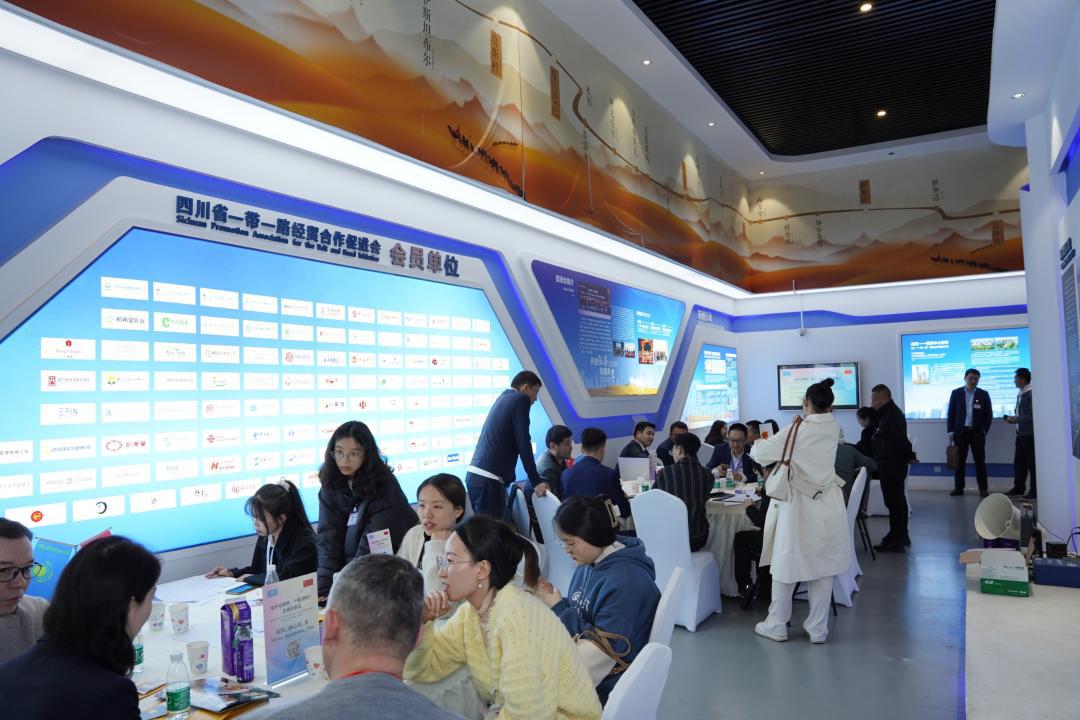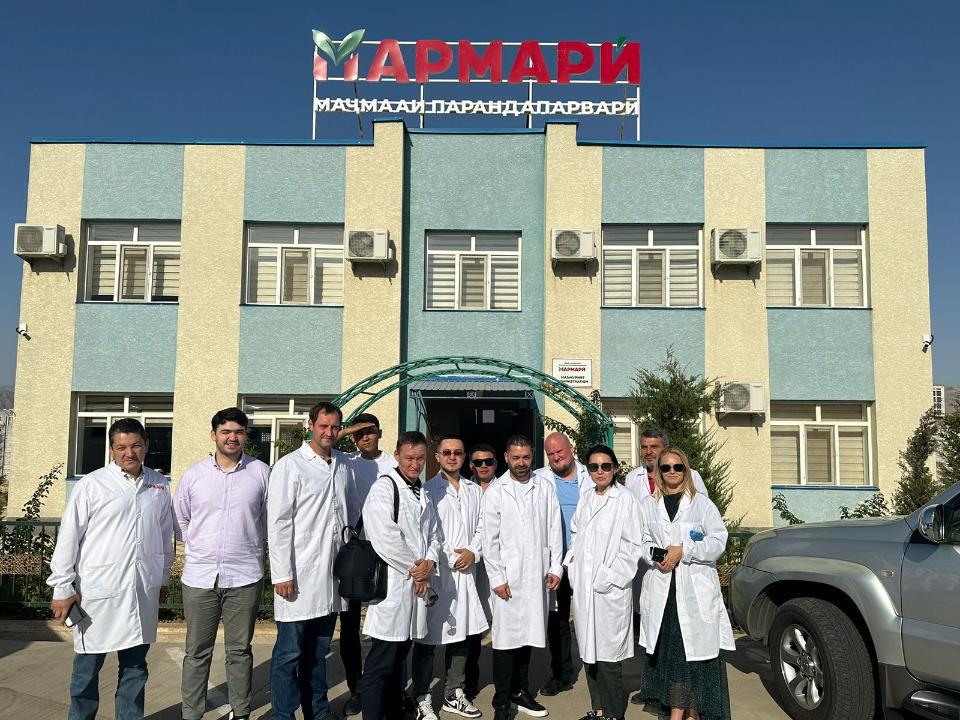ASTANA – Increasing non-raw material exports has been a priority for Kazakhstan. In 2023, non-raw material exports reached $35.1 billion out of $78.7 billion in total exports, said Nurlan Kulbatyrov, deputy director of QazTrade Trade Policy Development Center, in an interview with The Astana Times.

Nurlan Kulbatyrov. Photo credit: qaztrade.org.kz
This demonstrates an increase from $26.5 billion in non-raw exports in 2022. The strategic goal for Kazakhstan, Central Asia’s largest economy, is to bring the figure to $41 billion by 2025.
“Kazakhstan is actively diversifying its economy, which has historically depended on oil and gas exports. The government is seeking to develop non-resource industries, such as engineering, chemicals, agriculture and tourism, to reduce dependence on commodity exports and increase the sustainability of the economy,” said Kulbatyrov.
These efforts align with the objectives set by President Kassym-Jomart Tokayev in his state-of-the-nation address in September 2023.
“Sales policy is especially important amid growing global competition and the reorientation of commodity flows. The government faces the task of systematically expanding export geography. Measures should be taken to promote Kazakh goods in foreign markets,” Tokayev said back then.

Kazakhstan, the largest economy in Central Asia, currently sends products to 135 countries. Photo credit: The Astana Times
In 2023, Kazakhstan’s foreign trade reached $139.8 billion, an increase of 3.2% compared to the previous year. Exports reached $78.7 billion, down by 7% due to lower oil prices, one of the country’s key export commodities.
China has become the country’s largest trade partner, with bilateral trade hitting $31.5 billion.
In 2023, Kazakhstan’s export landscape was dominated by several key non-raw materials.
“Kazakhstan has prioritized food and light industry products, metallurgical and chemical products, equipment, electronics, automobiles, and automotive components as key non-raw material exports. In 2023, uranium, copper products, ferrochrome, and distillates led the way, contributing 40% to the nation’s total exports,” he explained.

This week, Kazakhstan’s manufacturers showcase their products at the 110th Beverage and Food Exhibition in Chengdu, China. The delegation, consisting of more than 100 entrepreneurs and 40 companies, is led by Minister of Trade and Integration Arman Shakkal
According to data from QazTrade, in 2023, uranium export revenues reached $3.4 billion, increasing by 31.1% from 2022. This solidifies Kazakhstan’s position as the world’s leading uranium producer.
However, other non-raw exports decreased last year. Copper exports went down by 14.9%, but they are still worth a staggering $3.2 billion.
“Kazakhstan’s metallurgical industry has the greatest export potential, representing 56.5% of the export of all non-raw material goods. Additionally, the domestic agricultural sector boasts significant export capabilities, with processed agricultural goods making up 92.3% of the total supply volume,” said Kulbatyrov.
According to the agency’s data, agricultural exports made $5.38 billion, and non-raw agricultural products made $2.4 billion, a slight decrease from $2.5 in 2022.
“One of the drivers of export revenue in Kazakhstan’s economy has become the service sector, with the export volume of services increasing by 20% in 2023. Medical, IT, and oil service sectors hold special export potential,” he said.
The diversification efforts have expanded Kazakhstan’s export basket to nearly 5,900 commodity items, including new products such as glass, nickel alloys, electric locomotives, and conductors.
“Kazakhstan’s export diversification is proving to be quite successful. In 2023, Kazakhstan exported goods to 135 countries, including small export batches to new countries like Gibraltar, Cambodia, and Bangladesh. The exploration of new markets by Kazakhstan’s entrepreneurs provides good opportunities for domestic exporters to establish themselves abroad,” said Kulbatyrov.
Export growth has been particularly notable in Southeast Asian countries. The share of exports to Asian countries, excluding the Commonwealth of Independent States (CIS), amounted to 35.3%.
“China has become Kazakhstan’s main trading partner, and the volume of [non-resource] exports to this country reached a record $5 billion. Exports of goods to Vietnam increased up to $180,000, and to South Korea and Thailand – up to $162,200 and $3,500, respectively,” he explained.
This surge in exports stems from state-backed initiatives, including the creation of the Export Credit Agency, following the lead of advanced economies. This agency provides insurance and financing services for export operations.

Kazakh producers during their visit to Dushanbe in September 2023. Photo credit: Ministry of Trade and Integration
“Thanks to financial support tools for exporters, the Export Credit Agency has been able to increase the volume of non-commodity exports annually. As a result, between 2022 and 2023, the amount of export contracts increased by 43% to 1.63 trillion tenge (US$3.6 trillion). If we look at the geography of export contracts, the main markets for Kazakhstan are Russia, Central Asian countries, China, and Afghanistan,” said Kulbatyrov.
The QazTrade center, established in 2019 under the Ministry of Trade and Integration, provides service support to Kazakh exporters. Last year, it organized trade missions to Azerbaijan, China, Iran, the Kyrgyz Republic, Saudi Arabia, Tajikistan, the United Arab Emirates, Uzbekistan and Vietnam to open access for Kazakhstan’s manufacturers of products and service providers to foreign markets.
The Kazakh entrepreneurs also had a chance to present their products at the largest import exhibition in Shanghai and Expo Eurasia in Urumqi.
“Comprehensive efforts to promote Kazakh goods and services in foreign markets secured contracts worth approximately $953 million,” he added.
On March 1, QazTrade announced a call for applications for its next cohort under the Export Acceleration program. Under the program, 120 enterprises will be selected from sectors such as machinery manufacturing, chemical, light, and food industries, and service providers.
The program, which focuses on promising small and medium-sized non-primary sector businesses, is designed to boost the export potential of Kazakh companies.
The Kazakh entrepreneurs will receive a range of services, from an analytical assessment of the company and its products to training on the rules of foreign trade activity to assistance in selecting a suitable market, finding a buyer, conducting marketing campaigns, organizing B2B meetings, and compiling a list of documents for export.
Between 2020 and 2023, over 400 small and medium-sized enterprises participated in the program.

